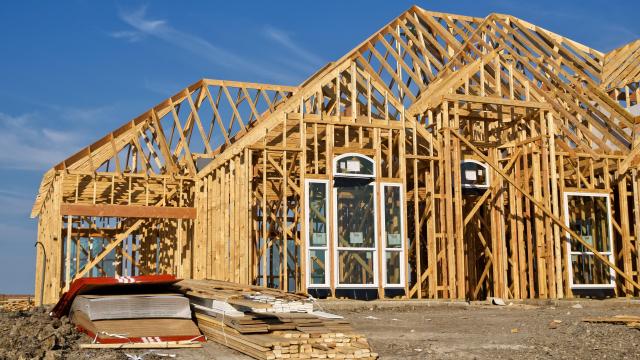Buying a house is always a fraught, stressful experience. For that reason, some buyers opt for new construction when house-hunting. They rationalize that new construction means more control over the style, floor plan, and features of the home — but also that a newly-built home will need less maintenance and present fewer problems than a decades-old place that has seen some wear and tear. In reality, though, about two-thirds of people who bought newly-built homes have regrets, ranging from minor irritations to a full-blown wish that they’d bought an existing home instead.
Any home is only as good as the work and materials put into it. To protect yourself during the process, you need to be on site frequently to see how things are going — and know what red flags to look for.
Can you walk away from new home construction?
First, find out if you even have the option to walk away from your new build. This depends entirely on the contract you signed — if the contract gives you a grace period or other options for getting out of the purchase, great. If there preventing you from walking away, though. you might be stuck. Always consult a lawyer with specific knowledge of real estate before signing anything. You can also try to have walk-away language inserted into the purchase agreement, but you should expect a lot of pushback on that.
If possible, ask to tour the current build site before signing the contract, and try to assess homes already in progress for the problems listed here. If a builder is cutting corners on some houses, they’re probably cutting corners on all their houses — and you’ll need to know before you sign on.
Red flags to watch for in new construction
The following things are all valid reasons to walk away from new construction — or to at least hold your builder’s feet to the fire and demand they be addressed:
Escalation clauses in the contract
Something else to look for before you sign the contract are escalation clauses. This is where the builder tries to insure themselves from rising costs of materials, labour, or other aspects of the building process by stipulating the price you just agreed to pay for your new house can go up anywhere from 10 to 20% at closing. If your builder includes this and refuses to take it out, walk away. It’s not your responsibility to ensure their profits.
Conflicting plans
When you sign a contract for a newly built home, you’ll get a sheaf of pre-construction documents, including a floor plan. Study these documents carefully, because they outline what the finished house is supposed to look like, how the rooms will be laid out, what the elevations will be — everything. When you visit the site, bring those plans with you and make sure they match. While it’s doubtful a builder will try to get away with major deviations, they might make a lot of tiny compromises that change the fundamentals of your home — and if they do so without making you aware of it, it’s a huge red flag.
Foundation problems
The foundation of your new home is absolutely crucial. Once it’s poured and set, you’ll want to inspect it for cracks. Many builders work incredibly fast, and skimp on compacting the soil under the house or other precautions when laying foundations. While some settling is pretty normal for a new house — and this can go on for years — you shouldn’t be seeing big, obvious cracks in the foundation right away. If you see cracks on the inside or outside of the foundation walls, at the very least you should get an expert in to assess them — and you might need to just walk away.
Poor drainage
After the lot has been graded, wait for a rainy day and then take a look at the drainage. Water shouldn’t be pooling near the house — and it absolutely should not be pooling against the house. This can be managed, but if your builder refuses or tries to argue that it won’t be an issue, it’s a big red flag. Because it will be an issue if water isn’t draining away properly.
Interior wall issues
Once the house has been drywalled, inspect all the walls in the house. You shouldn’t see cracks appearing immediately after the drywall is hung, and you shouldn’t see nail or screw pops anywhere — that can indicate moisture problems that are going to make life in your new home pretty dreary. Also bring a level and check that the walls are flat — while slight bowing might be unavoidable here and there, you shouldn’t see obvious curves on your walls, even in places where metal brackets are installed to protect pipes and wiring from nails and screws.
Sticking doors
An easily overlooked red flag in a newly-built house are doors and windows that don’t open or close easily. This can indicate moisture problems swelling the wood, but it can also indicate that the framing of the house is off. It’s true that fresh lumber will shift slightly as it dries out, but by the time your doors get hung, that shouldn’t be a problem throughout the house.
Your builder will most likely offer to address any concerns you have with the construction, and depending on their explanations and plans for remediation, you might be content to move forward. In the end, you’ll have to get professional advice — and ultimately go with your gut. Remember that just because you can’t get out of your contract doesn’t mean you have to just accept the house as-is — if you notice any of these red flags during a walk-through, speak up and demand the issue be dealt with.

Leave a Reply
You must be logged in to post a comment.